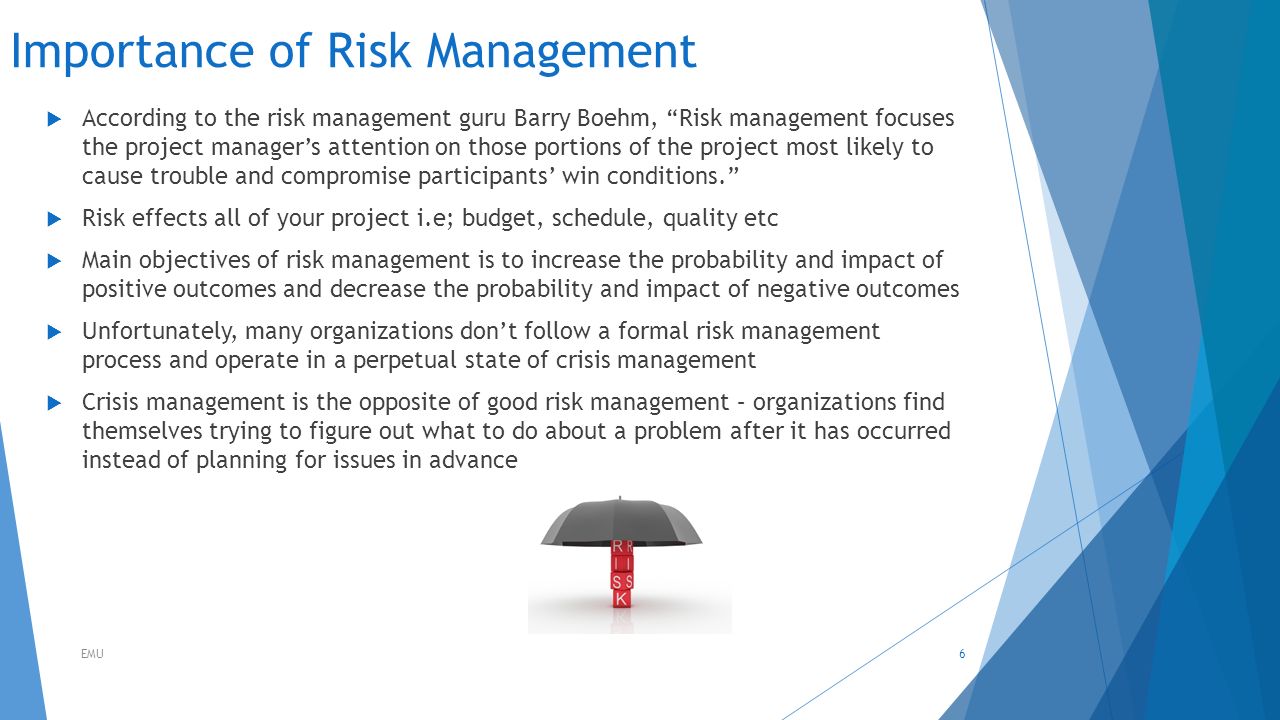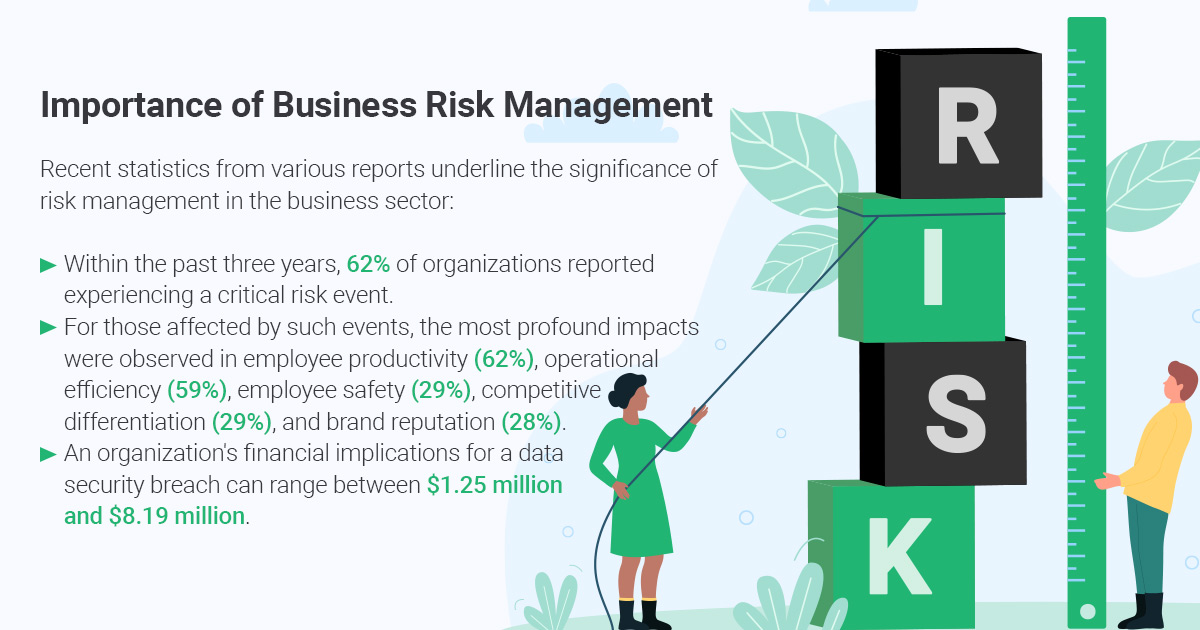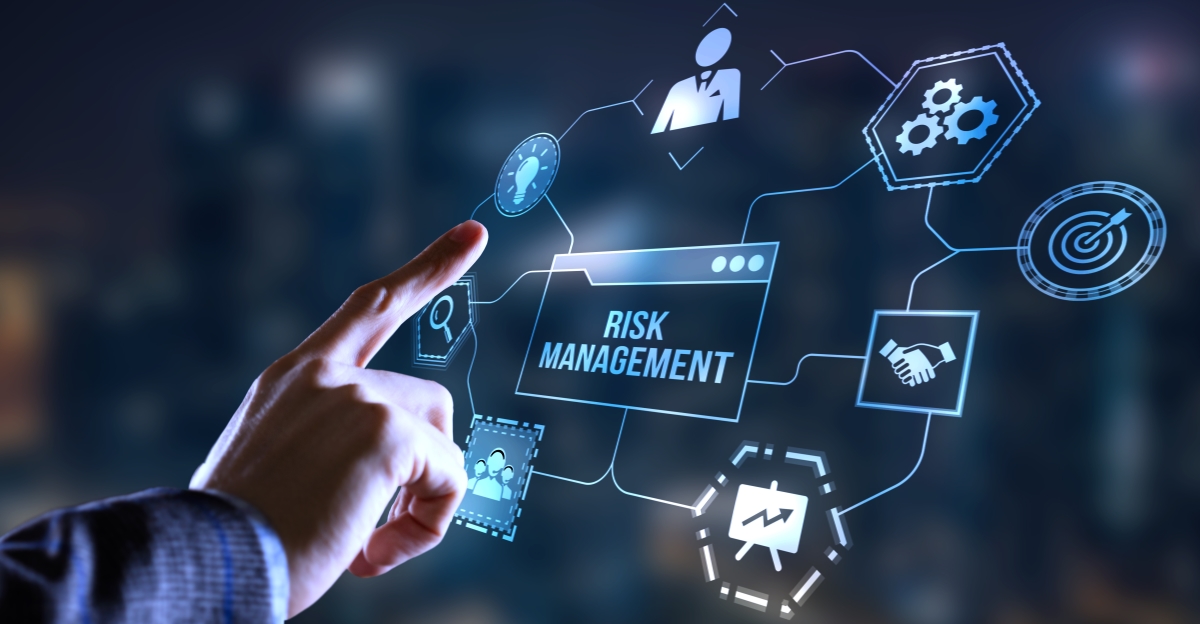Enhancing Business Efficiency Through the Importance of Risk Management
Enhancing Business Efficiency Through the Importance of Risk Management
Blog Article
Discovering the Significance of Risk Management for Effective Decision-Making Techniques
In the intricate world of service, Risk Management emerges as a critical variable in the decision-making procedure. The capability to determine prospective dangers and opportunities, and plan appropriately, can lead to the distinction between success and failure.
Comprehending the Idea of Risk Management
Risk Management, a vital part in decision-making, is typically misconstrued or oversimplified. Normally, it describes the identification, analysis, and prioritization of risks to decrease, check, and regulate the chance or effect of unfavorable occasions. It's not simply regarding protecting against adverse outcomes, but additionally about recognizing possible possibilities. Risk Management entails structured and self-displined methods, utilizing data and insightful evaluations. It calls for a thorough understanding of the company's context, purposes, and the possible dangers that could prevent them. From monetary unpredictabilities, legal liabilities, critical Management mistakes, to accidents and all-natural disasters, it resolves various threats. Notably, effective Risk Management is not stagnant; it's a continual, positive procedure that evolves with transforming scenarios.
The Function of Risk Management in Decision-Making Processes
In the world of calculated planning and service procedures, Risk Management plays an essential duty in decision-making procedures. Risk Management therefore ends up being an important device in decision-making, aiding leaders to make educated selections based on an extensive understanding of the risks entailed. Risk Management serves as a vital element in the decision-making processes of any kind of organization.

Exactly How Risk Management Boosts Strategic Planning
In the context of tactical preparation, Risk Management plays an essential function. Launching with the recognition of potential dangers, it further reaches the execution of Risk reduction measures. The role of Risk Management is dynamic however not fixed, as it demands consistent tracking and adjusting of techniques.
Identifying Potential Threats

Implementing Risk Reduction
Having developed the value of determining prospective risks, the following step is to check out Risk mitigation. This process includes establishing and executing techniques to manage identified dangers efficiently. It is an important facet of strategic preparation as it boosts decision-making by reducing potential adverse outcomes. Risk reduction methods can vary from Risk evasion, Risk transfer, to risk decrease. Each approach should be customized to the details Risk, considering its prospective influence and the organization's Risk tolerance. Additionally, effective Risk reduction calls for a deep understanding of the Risk landscape and the possible influence of each Risk. This understanding allows organizations to focus on dangers and allot resources efficiently, ensuring that one of the most substantial dangers are attended to initially.
Surveillance and Readjusting Techniques
Though Risk reduction is a vital action in calculated preparation, continual tracking and change of these techniques is just as essential. This ongoing process enables companies to determine brand-new threats and reassess existing ones, making sure the implemented approaches stay reliable in the ever-changing company atmosphere. It also offers a chance to evaluate the success of the Risk Management measures, permitting modifications to be made where needed, additional improving tactical preparation. Effective tracking and modification call for using analytics and crucial performance signs (KPIs) to determine effectiveness. These devices supply beneficial data-driven understandings that can inform critical decision-making. Consequently, tracking and readjusting Risk Management strategies is an essential part for improving a company's strength and calculated planning.
Instance Studies: Effective Risk Management and Decision-Making
Worldwide of organization and finance, effective Risk Management and decision-making often go to these guys function as the pillars of flourishing enterprises. One such entity is a multinational oil firm that reduced financial loss by hedging versus rising and fall oil prices. In one more instance, a technology startup thrived by identifying and accepting high-risk, high-reward methods in an unstable market. An international bank, encountered with governing unpredictabilities, efficiently navigated the circumstance through proactive Risk evaluation and vibrant decision-making. These situations highlight the worth of astute Risk Management in decision-making procedures. It is not the absence of Risk, yet the Management of it, that usually separates successful companies from not successful ones. These cases highlight the vital role of Risk Management more information in critical decision-making. importance of risk management.
Tools and Strategies for Reliable Risk Management
These tools, such as Risk registers and heat maps, aid in determining and evaluating prospective threats. Risk response approaches, a vital element of Risk Management, include accepting, preventing, transferring, or mitigating threats. With these methods and devices, decision-makers can navigate the complex landscape of Risk Management, therefore helping with educated and efficient decision-making.
Future Fads in Risk Management and Decision-Making Approaches
As we discover the substantial landscape of Risk Management, it ends up being apparent that the strategies and tools used today will certainly continue to progress. Future patterns point in the direction of a boosted dependence on modern technology, with man-made intelligence and artificial intelligence playing considerable roles. These innovations will certainly enable organizations to predict possible dangers with better accuracy and make even more enlightened decisions. Furthermore, there will certainly be a growing focus on resilience, not simply in managing threats however additionally in getting better from adverse circumstances. The concept of Risk culture, where every member of an organization is conscious and included in Risk Management, will get a lot more importance. These fads advertise an even more comprehensive and proactive technique in the direction of Risk Management and decision-making.
Final thought

Risk Management therefore comes to be an essential device in decision-making, aiding leaders to make informed selections based on a detailed understanding of the threats entailed. Risk reduction approaches can range from Risk evasion, Risk transfer, to run the risk of reduction (importance of risk management). Reliable Risk reduction needs Learn More a deep understanding of the Risk landscape and the prospective influence of each Risk. Risk reaction approaches, an essential element of Risk Management, entail accepting, avoiding, transferring, or mitigating dangers. The concept of Risk culture, where every member of an organization is aware and included in Risk Management, will acquire much more prestige
Report this page